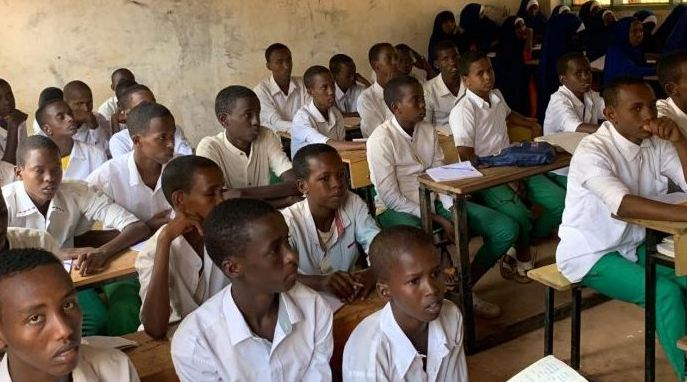
Africa
02:14, 11-Jun-2019
For Dadaab’s children, access to education is still limited
CGTN

Two kilometers away from the town of Dadaab, in eastern Kenya lies the Ifo refugee camp. Ifo, along with the Dagahaley and Hagadera refugee camps help comprise the third largest complex of refugee camps in the world. More than 211,000 refugees and asylum seekers currently live there.
In many ways, the Dadaab refugee complex resembles a city or small country. It has similar problems. Residents deal with high population density, maintaining an economy and educating their children, among other things.
Access to education in the refugee camps and the Dadaab region outside the camps is limited. There are six primary schools and just one secondary school in the entire refugee complex.
Hormuud Primary School opened in 2009. Teachers follow the Kenyan curriculum as they attempt to cater to the educational needs of the roughly 2000 students who attend.
According to the headteacher, Aden Hussein Mohammed, the school opened shortly after the drought in Somalia brought an influx of refugees into the camp.
“The school offers five main programs; mainstream primary education, early childhood development education, special needs education, information communications technology and school meal programs, says Mohammed.
In the special needs program, we meet six students who are set to take their national examinations this year for the Kenya certificate of primary education.
18-year-old Noor Osman is one of the 6 candidates. He lost his vision in 2003 and has been in Dadaab for the last 8 years after fleeing from his home in Somalia.
He says being a special needs student at the camp is not easy.
“We don't have enough Brailles and talking calculators, we don't have books to read and now we are in class eight,” Osman says. “We don't have enough computers, we also don't have a car to carry us from home to school and earlier we had a car to carry us.”
Mohammed says in addition to offering instruction inside the classroom many of the teachers that deal with special needs kids do home visits.
“For those that are paralytic we go to their homes. Disability is not inability, the way the government caters for other learners, they should cater for these ones, as they are no different,” says Mohammed.
One of the school's founders, Michael Walter Kagwa agrees. Kagwa arrived at Dadaab as a refugee from Uganda in 1987. He is one of nearly 900 Dadaab refugees who later went on to become teachers.
“We should not look ourselves as being hampered from any progress as refugees, we can do a lot more than that,” Kagwa says. There's connectivity in this school. We can go global for example we can check on connections with the rest of the world at any given time.”
However, pay for teachers like Kagwa, Mohammed and the small handful of trained and qualified teachers in Dadaab is quite low. The poor pay and the threat of attacks on non-locals, like one which took place in Garissa in 2018 discourage many qualified teachers from coming to the area. As a result, the ratio of teachers to students is incredibly low. The ratio ranges from 1:60 in smaller classes. 1:80 in the more congested ones.
The lack of adequate schools, equipment and teachers all help contribute to a low attendance rate among primary school-age children in Dadaab. It is estimated that only half of the children there are enrolled. Dadaab's statistics mirror those at the global level. The UNHCR estimates that half of the 3.5 million refugee children of primary school age do not go to school. Some of the reasons for low enrollment vary greatly and include among other factors low absorption capacity in local schools, the distance a child has to travel to get to the classroom and a plethora of social, cultural and economic factors. Looming over everyone's head in Dadaab is the Kenyan government's threat to close the camps altogether.
The government wants to close the Dadaab refugee complex because it says the camp is a security risk. Several of the individuals who carried out a deadly terrorist attack in Nairobi in January were traced back to Dadaab.
Hormuud headteacher Aden Mohammed says if the camp closes, the overwhelming majority of the residents there will have no place to go. He says he is especially worried about the children. Like many of his students, he was educated in Dadaab and would like to help ensure that Dadaab's youngest inhabitants receive some form of education and chance at a prosperous life.

SITEMAP
Copyright © 2018 CGTN. Beijing ICP prepared NO.16065310-3
Copyright © 2018 CGTN. Beijing ICP prepared NO.16065310-3